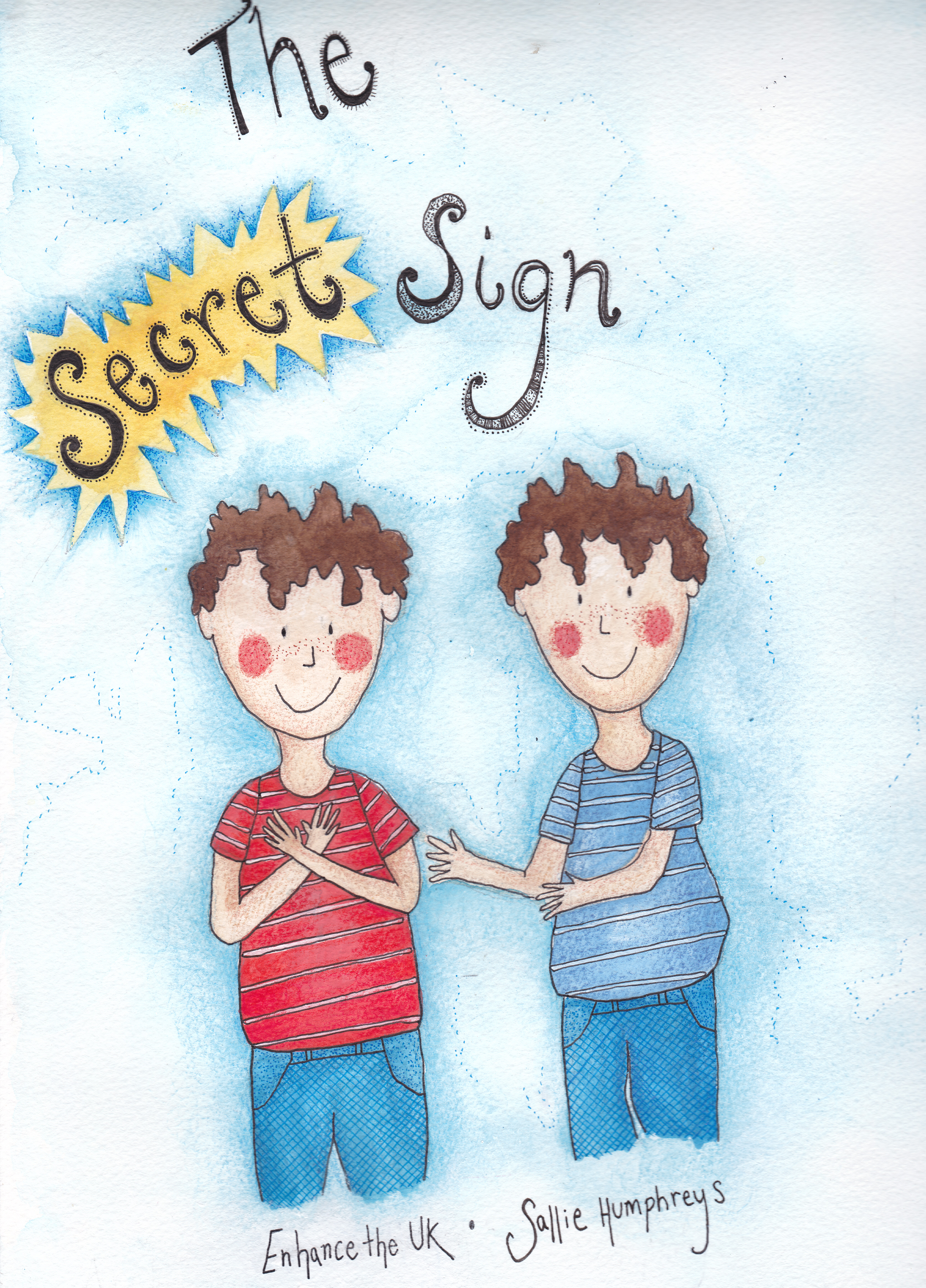
This week at Enhance the UK I have been promoting our Indigogo campaign – The Secret Sign. This is a campaign to raise £3,000 to be able to publish the book that we have written.
Anyone who knows us understands that we are all incredibly busy and are likely to be asking, ‘what were you thinking writing a children’s book?’ I thought I would take the opportunity to fill you in with the details.
When running disability awareness sessions in primary schools, I often had teachers asking if I could recommend good books with disabled characters in them. This made me think about why it is important for disabled characters to be in children’s books. We at Enhance the UK are running the disability awareness sessions in schools because we believe that attitudes to disability are shaped during childhood and therefore we wish to encourage children to develop positive views relating to disability. It has, for a long time, been established that books allow children to see characters who look like themselves, have similar thoughts and feelings. Books also allow children to see characters with different backgrounds and learn about the world. It therefore stands to reason the importance of having positive disabled characters in children’s books in order for disabled children to be able to identify with characters similar to themselves and for non disabled children to learn about disability in a positive way. I then decided that I had better conduct a bit of research and, to be honest, the findings were shocking. Now don’t get me wrong, there are books out there. But in my opinion, they frequently fall into one of three categories.
Firstly, the books which address disability and being different in an abstract way. I am sure that we are all familiar with them. The characters tend to be animals who struggle to fit in. I am in no way discrediting these books. I think they are lovely stories and have a time and a place but I do not believe that the majority of the readers relate these characters to real people with disabilities.
Next, there is the picture book story in which one of the characters is wearing a hearing aid or in a wheelchair. The disability itself is not mentioned during the plot. An argument for this type of book is that it normalises disability. There is a drive to ensure diversity is displayed within children’s books. Picking up books written when I was younger (25 plus years ago. .. cough, cough) nearly all the characters in books were white and it was rare to see a character from a different ethnic background. Now there are far more books out there in which the characters are clearly not from a white European background but there is very little in the written content of the story about the cultural background of the characters. This, to me, can only be a positive thing and I hope that more books will feature children with disabilities in the same way.
Lastly, there is the book which features disabled characters who are central to the story, but tends to address the disabilities in stereotypical ways. In my view it is fair to say that books including disability which do not fall into one of the mentioned categories are few and far between. We at Enhance didn’t want to write a good book about disability. We wanted to write a good book, full stop. We have created a story about twin brothers Seth and Sammy – Seth is deaf, while Sammy is hearing. The book is about their relationship and how British Sign Language affects their lives. It’s the first in a series of books which will include characters who have various disabilities. We are also very lucky to have a fantastic illustrator on board too.
I hope you can all see why this book is incredibly important to us now. If you can support us in any way we really would appreciate it.
